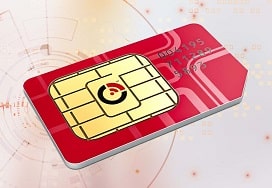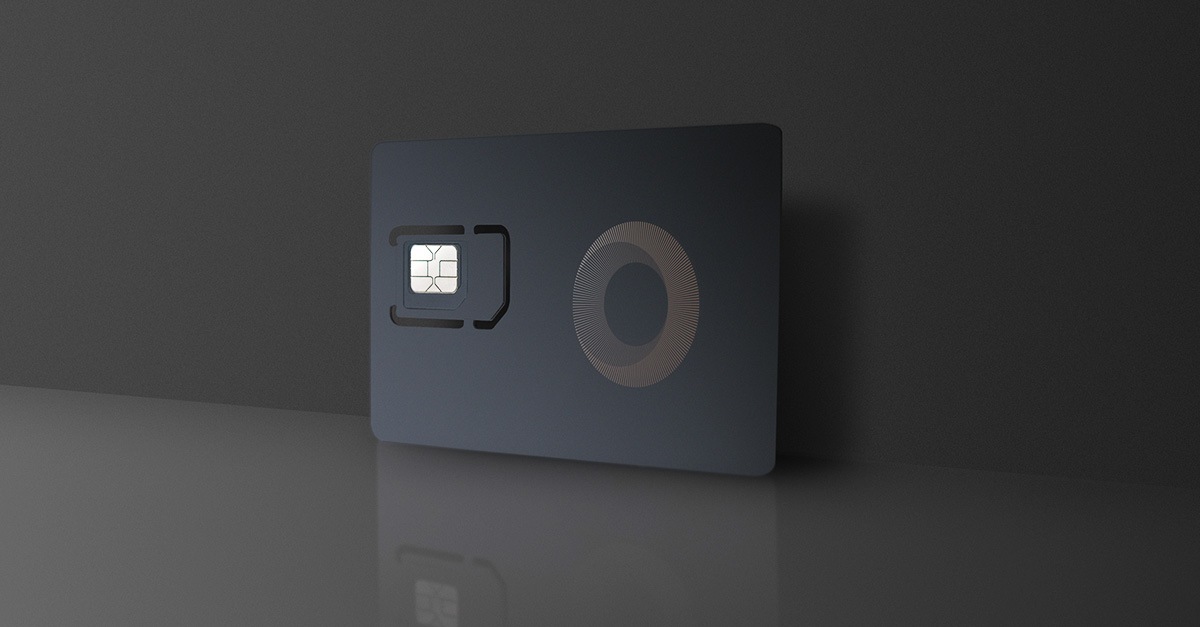Iot Sim copyright M2M IoT SIM Cards
In the quickly evolving landscape of the Internet of Things, connectivity is essential for the seamless functioning of units and techniques. Two principal technologies have emerged as key rivals: Wi-Fi and Low Power Wide Area Networks (LPWAN). Each has its personal strengths and weaknesses, making them suitable for various purposes.
Wi-Fi is thought for its high-speed data switch and widespread availability, making it a well-liked alternative for lots of smart gadgets. Its high bandwidth permits for the transmission of large quantities of data shortly, perfect for applications that require excessive data throughput. This could be notably beneficial in environments like smart houses, the place a number of gadgets could also be streaming video or exchanging giant knowledge recordsdata concurrently.
Iot Sim Card Pricing M2M IoT SIM Cards
However, the reliance on more power-consuming hardware could be a disadvantage. Wi-Fi gadgets typically require a continuing energy supply, which limits their use in applications the place devices have to function for extended durations with out frequent recharging or battery replacement. Smart sensors and units utilized in agricultural fields or rural environments usually encounter such limitations - Vodafone Iot Sim Card.
LPWAN, on the opposite hand, provides a particular benefit in energy consumption. Designed for low-power operations, LPWAN technologies permit units to transmit knowledge over lengthy distances on very little energy. This characteristic makes LPWAN a beautiful choice for IoT use instances involving sensors that have to function in remote places for extended durations.
The range of LPWAN is another compelling feature, as it can cover several kilometers, even in rural settings. In distinction, Wi-Fi tends to have a restricted vary, usually encompassing several hundred meters. This is especially relevant in purposes involving smart agriculture, where sensors monitoring soil conditions or crop health may be distributed over huge expanses of land.
While Wi-Fi is simpler to deploy, particularly in urban areas, the infrastructure required for LPWAN may involve more complexity. Companies may need to ascertain base stations or associate with community providers to ensure coverage. This could deter some companies from pursuing LPWAN, regardless of its benefits in range and energy efficiency.
Telkomsel Iot Sim Card IoT SIM Cards Explained Understanding Differences

Security is another essential factor to think about. Wi-Fi networks often employ strong safety protocols, however they may also be more vulnerable to cyber threats when compared with LPWAN protocols, which tend to be less frequent and due to this fact much less targeted. This can present a double-edged sword; while LPWAN could additionally be much less vulnerable to attacks because of its lower visibility, its security mechanisms may not be as subtle.
Data latency can additionally be a noteworthy consideration. Wi-Fi generally provides lower latency in comparability with LPWAN, making it extra suitable for real-time applications the place quick knowledge retrieval is crucial, corresponding to video streaming or on-line gaming. For IoT applications that may tolerate longer information transmission occasions, such as environmental monitoring or utility meter readings, LPWAN may be satisfactory.
Scalability is an important aspect of business IoT. Wi-Fi networks can turn out to be congested as more gadgets are added, leading to decreased efficiency. LPWAN, however, is specifically designed to accommodate numerous devices over huge areas without substantial efficiency degradation. This makes it an appropriate option for smart metropolis applications, the iot sim card india place hundreds of sensors and devices should operate concurrently.
Cellular Iot Sim Card SIM Card IoT Projects Global Deployments
The value factor can also play a major position in determining the proper selection for IoT connectivity. Wi-Fi installations can usually be cost-effective in smaller setups, however expenses can rise considerably with bigger deployments because of the want for extra access factors and infrastructure. Conversely, LPWAN's low operating prices and long battery life could translate to vital savings in intensive deployments.
Operational requirements range for both technologies. Wi-Fi requires a more secure and reliable energy source, making it much less suitable for mobile IoT functions. LPWAN, with its energy-efficient design, can support gadgets in motion, corresponding to asset trackers in logistics or fleet management - Hologram Iot Sim Card. This feature extends its applicability to situations the place gadgets need to transmit knowledge whereas on the transfer.
Iot Sim Card South Africa IoT SIM Cards Introductory Guide

When addressing the particular use cases for IoT, it becomes clear that every expertise has its own best functions. Wi-Fi is particularly effective in environments the place high-throughput and immediate response are crucial. Settings similar to smart properties, commercial buildings, and concrete facilities frequently require the high-speed capabilities that Wi-Fi offers.
LPWAN excels in situations involving remote monitoring and low-frequency data transmission. Use cases like agricultural monitoring, wildlife tracking, and smart metering are particularly suited to the strengths of LPWAN technology. Its capacity to extend battery life in low-power gadgets makes it a wonderful candidate for these functions, the place constant energy sources are not readily available.
Ultimately, the choice between Wi-Fi and LPWAN for IoT connectivity will depend on particular project necessities. Evaluating elements such as power consumption, range, information transmission wants, security, and scalability will be essential in making an knowledgeable determination.
As IoT continues to mature, hybrid options may emerge that seek to check my reference mix the strengths of each technologies. For instance, a smart metropolis might deploy LPWAN for low-power sensors monitoring environmental conditions, while utilizing Wi-Fi for high-bandwidth purposes like surveillance cameras. Such integrations could result in extra resilient and adaptable networks that cater to numerous requirements.
Telkomsel Iot Sim Card Freeway simHERO IoT Prepaid SIM
The growth of IoT functions necessitates ongoing assessment of connectivity choices. With advances in both Wi-Fi and LPWAN technologies doubtless on the horizon, staying informed about their capabilities and limitations is vital to maximizing their potential in real-world purposes. As industries continue to innovate, the dialogue between these two technologies will likely form the lengthy run connectivity panorama.
In conclusion, while Wi-Fi and LPWAN each maintain distinctive benefits for IoT connectivity, the decision must be informed by practical concerns and specific application wants. The capability to adapt and choose the proper know-how could considerably improve the efficacy and efficiency of IoT options in myriad sectors.

- Wi-Fi provides greater data switch speeds, making it suitable for applications requiring real-time information streaming, like video surveillance.
- LPWAN expertise focuses on long-range communication, enabling devices to attach over kilometers while consuming minimal power.
- Wi-Fi networks can expertise congestion, particularly in densely populated areas, potentially resulting in interruptions in connectivity.
- LPWAN is designed specifically for low-power devices, permitting them to operate for years on a single battery, perfect for remote sensor functions.
- Wi-Fi sometimes requires more frequent maintenance and safety updates, while LPWAN networks usually have lower administration overhead as soon as established.
- Scalability is a significant advantage of LPWAN, as it could simply accommodate hundreds of gadgets in a single network with out significant degradation in efficiency.
- Devices on Wi-Fi usually require a steady power supply, which limits their deployment in remote or hard-to-reach areas, while LPWAN options can operate effectively in such environments.
- Wi-Fi helps higher frequency bands, which may lead to higher interference however gives it higher performance in short-range purposes.
- The cost of deploying LPWAN could be decrease in terms of infrastructure, particularly for large-scale IoT networks, as fewer base stations are needed for coverage.
- Wi-Fi standards are continually evolving, offering new features, however this will typically result in compatibility points with legacy units, not like the extra stable LPWAN protocols.undefinedWhat is the principle difference between Wi-Fi and LPWAN for IoT connectivity?undefinedWi-Fi is a high-bandwidth, short-range connectivity choice perfect for big amounts of knowledge, while LPWAN (Low Power Wide Area Network) is designed for low-bandwidth, long-range communication, making it suitable for distant IoT gadgets needing minimal data transmission.
Iot Sim Card IoT SIM Cards Available Anyone
Which expertise is best for battery life in IoT gadgets, Wi-Fi or LPWAN?undefinedLPWAN generally consumes much much less energy, enabling battery-operated devices to perform for years, whereas Wi-Fi gadgets tend to drain batteries quicker because of their higher power necessities.
Can I use Wi-Fi for large-scale IoT deployments?undefinedWi-Fi can be utilized for large-scale deployments, but it might face challenges like congestion and range limitations. LPWAN, on the opposite hand, is designed for large-scale protection and better scalability in IoT purposes.
Free Iot Sim Card Global IoT SIM Card Multi-Network M2M
What forms of use cases are greatest suited to LPWAN?undefinedLPWAN works well for purposes that require broad protection and low data rates, similar to smart agriculture, asset monitoring, and environmental monitoring, where devices could also be deployed in distant locations.
Is Wi-Fi sufficient for urban IoT applications?undefinedWhile Wi-Fi can serve city IoT wants, points like interference and limited range might come up. LPWAN presents a extra reliable solution for urban purposes needing in depth coverage often beyond a single Wi-Fi network vary.
How does information switch pace compare between Wi-Fi and LPWAN?undefinedWi-Fi sometimes provides high-speed knowledge switch charges appropriate for functions needing fast data trade. LPWAN provides lower speeds however compensates with higher protection and higher battery life for low-data-use instances.
Are there safety issues related to Wi-Fi and LPWAN?undefinedBoth technologies have safety concerns, however Wi-Fi is usually deemed extra susceptible to unauthorized entry. LPWAN incorporates varied encryption standards, providing safety features tailor-made for IoT deployments.
Global Sim Card Iot Fastest growing multi-network IoT SIM
Can LPWAN assist real-time communication needs?undefinedLPWAN is not designed for real-time applications due to its decrease knowledge transfer rates and latency. Wi-Fi is extra appropriate for functions requiring instant information exchange, such as video streaming or live monitoring.
What impact do environmental factors have on Wi-Fi and LPWAN?undefinedEnvironmental factors such as partitions and interference can considerably have an effect on Wi-Fi performance, limiting its range. LPWAN is designed to perform nicely over longer distances and thru varied obstacles, making it extra resilient in numerous environments.